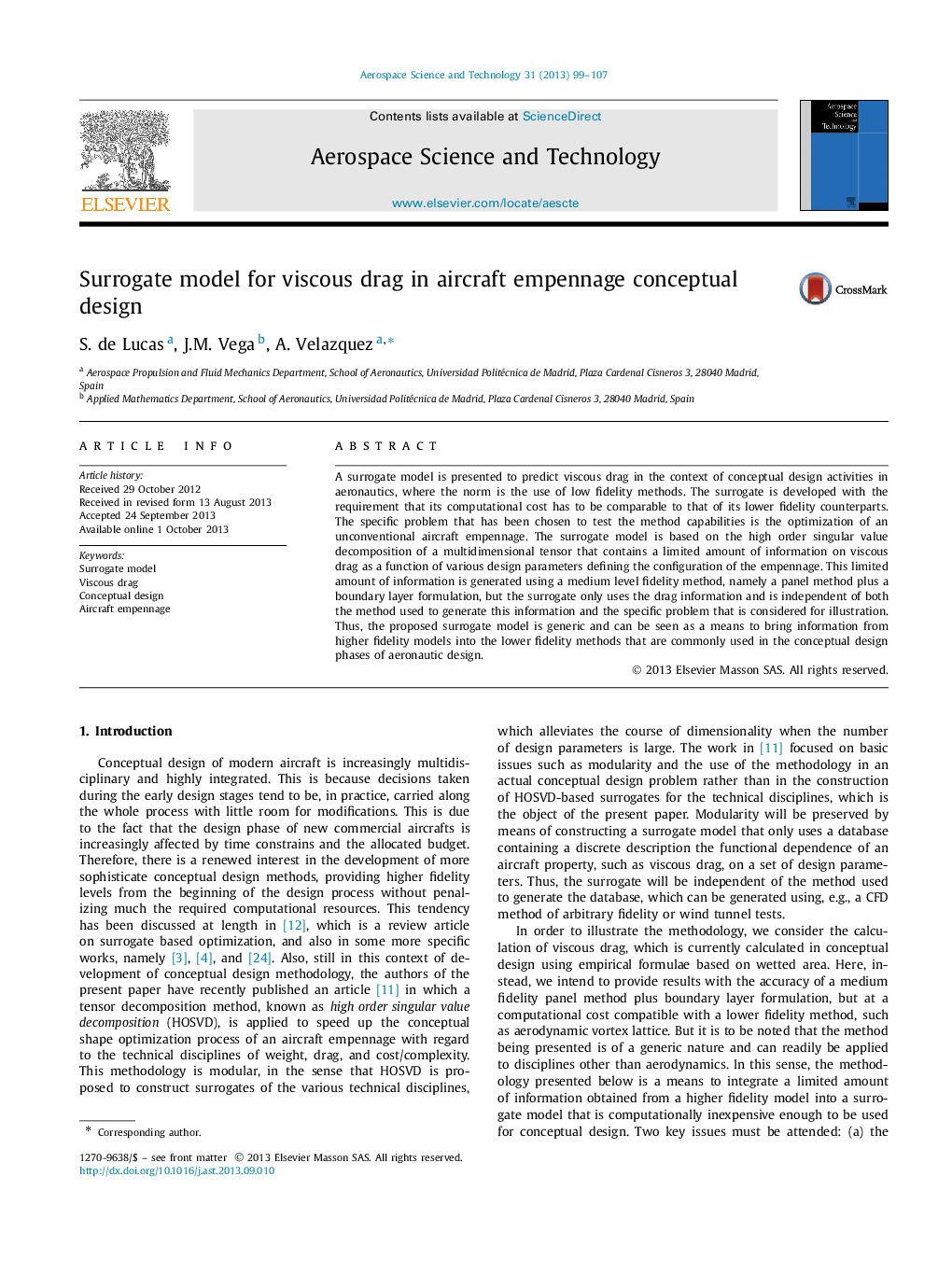| Article ID | Journal | Published Year | Pages | File Type |
|---|---|---|---|---|
| 1718189 | Aerospace Science and Technology | 2013 | 9 Pages |
A surrogate model is presented to predict viscous drag in the context of conceptual design activities in aeronautics, where the norm is the use of low fidelity methods. The surrogate is developed with the requirement that its computational cost has to be comparable to that of its lower fidelity counterparts. The specific problem that has been chosen to test the method capabilities is the optimization of an unconventional aircraft empennage. The surrogate model is based on the high order singular value decomposition of a multidimensional tensor that contains a limited amount of information on viscous drag as a function of various design parameters defining the configuration of the empennage. This limited amount of information is generated using a medium level fidelity method, namely a panel method plus a boundary layer formulation, but the surrogate only uses the drag information and is independent of both the method used to generate this information and the specific problem that is considered for illustration. Thus, the proposed surrogate model is generic and can be seen as a means to bring information from higher fidelity models into the lower fidelity methods that are commonly used in the conceptual design phases of aeronautic design.
